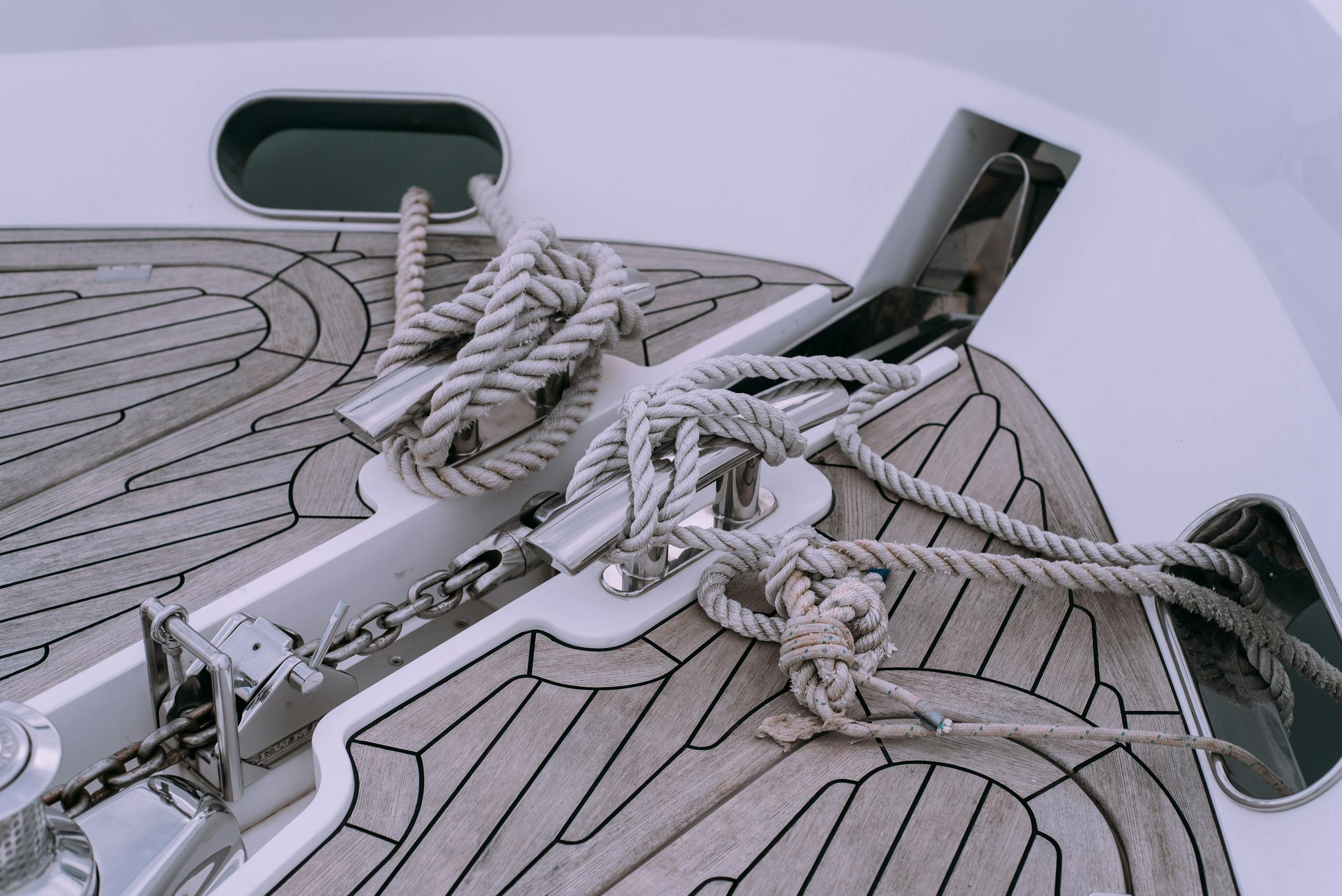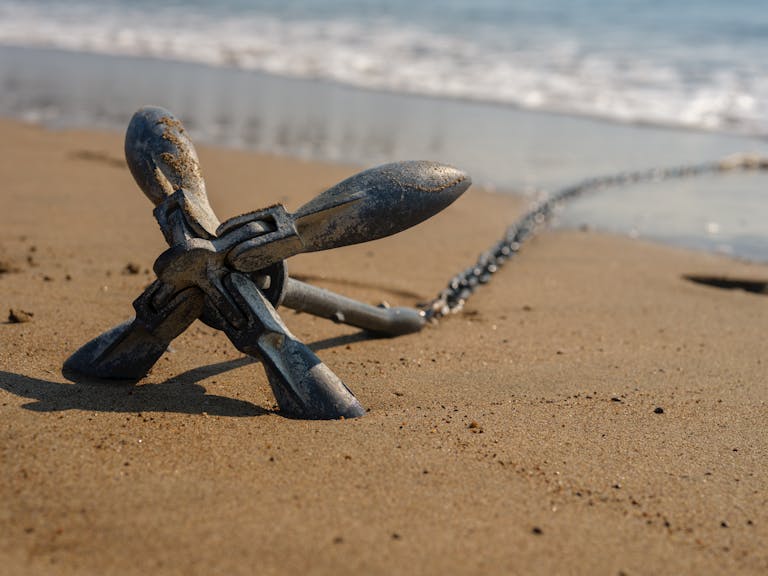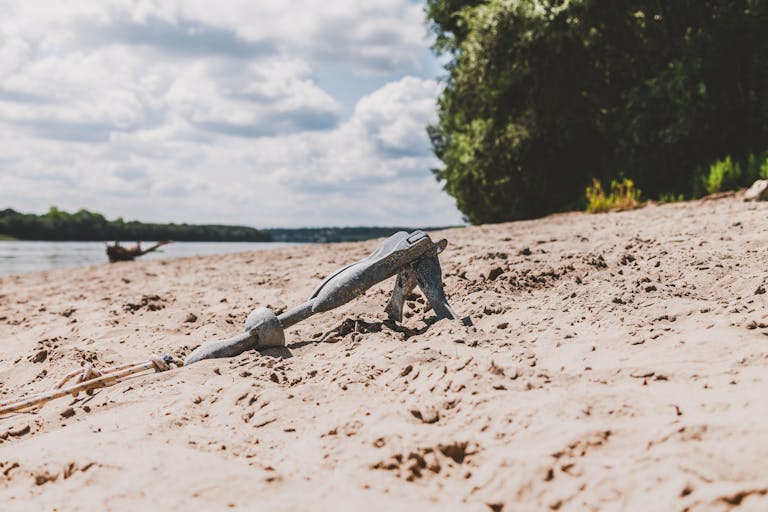Regular inspection of your anchor and chain is crucial for maintaining their integrity and ensuring your boat remains securely anchored. Wear and corrosion can weaken these components, potentially leading to anchor failure and serious safety hazards.
Here’s a comprehensive guide on how often and what to look for when checking your anchor and chain for wear and corrosion.
1. Frequency of Inspections
- Pre-Trip Inspections: Check your anchor and chain before each outing, especially if planning a longer trip or anchoring in unfamiliar or challenging conditions. This quick check can prevent unexpected failures on the water.
- Monthly Inspections: Conduct a more thorough inspection of the entire anchor system at least once a month during the boating season. Include both visual checks and hands-on examinations of the anchor, chain, and connections.
- Seasonal or Annual Inspections: At the beginning and end of each boating season, perform a comprehensive inspection. This should include detailed checks for wear, corrosion, and overall condition. It’s a good time to service or replace any parts showing significant signs of wear.
- After Severe Conditions: Inspect your anchor and chain immediately after exposure to severe weather, strong currents, or rough seas. These conditions can accelerate wear and damage, even if they are not apparent at first glance.
2. Inspection Points
Anchor
- Flukes and Shank: Look for any deformation, cracks, or significant wear on the flukes and shank. Ensure that the flukes are straight and not bent, which could reduce holding power.
- Stock and Roll Bar: On anchors with a stock or roll bar, check for secure attachments and any signs of bending or damage.
- Surface Condition: Inspect for corrosion, especially if the anchor is made from metal that can rust. Clean off any marine growth, which can conceal underlying damage.
Chain
- Links: Check each link for signs of wear, elongation, or cracks. Pay particular attention to the links closest to the anchor, as these experience the most stress.
- Corrosion: Look for rust and other signs of corrosion. Chain links can corrode internally, leading to weakened spots that might not be immediately visible.
- Swivels and Shackles: Inspect swivels and shackles for wear and corrosion. Ensure that all pins and cotter pins are secure and in place.
- Surface Cleaning: Clean the chain regularly to remove salt deposits, which can accelerate corrosion. This can be done with fresh water and a brush.
Rode (if applicable)
- Splice and Thimble: Inspect the rope-to-chain splice for fraying or wear. Ensure the thimble is not corroded or misshapen.
- Rope Condition: Check the condition of the rope for signs of chafing, cuts, or weakened fibers. Replace any sections showing significant wear.
3. Inspection Techniques
- Visual Inspection: Carefully look over all components of the anchor and chain. Use a flashlight to examine areas that are hard to see, and ensure that all surfaces are clean and free of marine growth.
- Hands-On Examination: Feel the anchor and chain for rough spots or irregularities that may indicate wear or corrosion. Flex the chain to check for stiffness or unusual movement in the links.
- Testing: Periodically test the anchor by setting it in various seabeds to ensure it holds properly. This practical test can reveal issues not visible during a physical inspection.
4. Corrosion Prevention and Maintenance
- Rinsing: After each use, especially in saltwater, rinse the anchor and chain with fresh water to remove salt and reduce corrosion.
- Lubrication: Apply marine-grade lubricants to swivels, shackles, and other moving parts to reduce friction and prevent corrosion.
- Protective Coatings: Use protective coatings or galvanization on chains and anchors to enhance their resistance to corrosion. Check the condition of these coatings during inspections and reapply as needed.
- Storage: When not in use, store the anchor and chain in a dry, ventilated area. Avoid storing them in damp conditions or directly on the deck where they can collect moisture.
5. Replacement Criteria
- Visible Wear: Replace any part of the anchor or chain showing significant wear, deformation, or thinning. Chains should be replaced if links are more than 10% worn compared to new links.
- Corrosion: Replace any components with extensive rust or corrosion that can’t be removed through cleaning. Even if the corrosion seems superficial, it can significantly weaken the metal.
- Regular Lifecycle: As a preventive measure, replace your anchor and chain every 5-7 years, or more frequently in harsh environments, even if they appear to be in good condition. This reduces the risk of unexpected failures.
6. Record Keeping
- Maintenance Log: Keep a detailed maintenance log of inspections, findings, and any repairs or replacements made. This record helps track the condition of your anchor and chain over time and ensures regular maintenance is carried out.
- Service Dates: Note the dates of inspections and service in your log. Schedule future inspections based on this history to maintain a regular maintenance routine.
Regular inspection and maintenance of your anchor and chain are vital for ensuring they perform reliably when needed. By adhering to a consistent inspection schedule and addressing any issues promptly, you can prevent anchor failures and enhance the safety and enjoyment of your boating experience.



